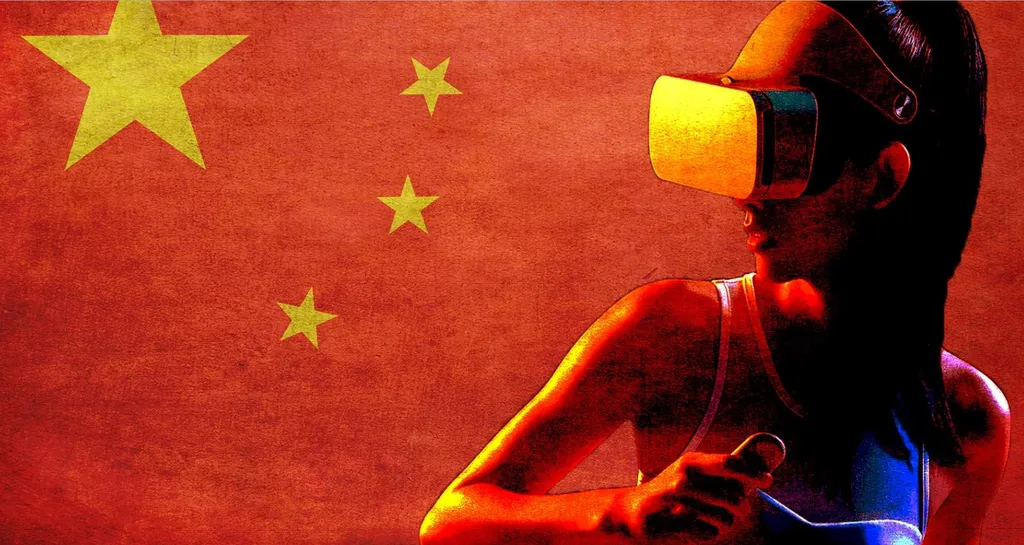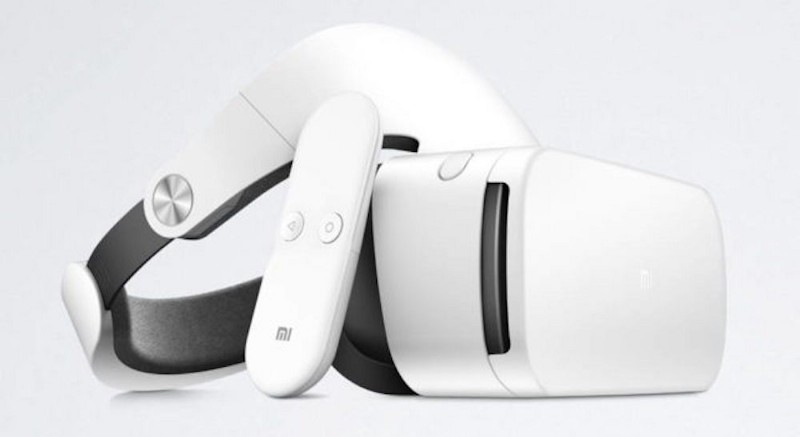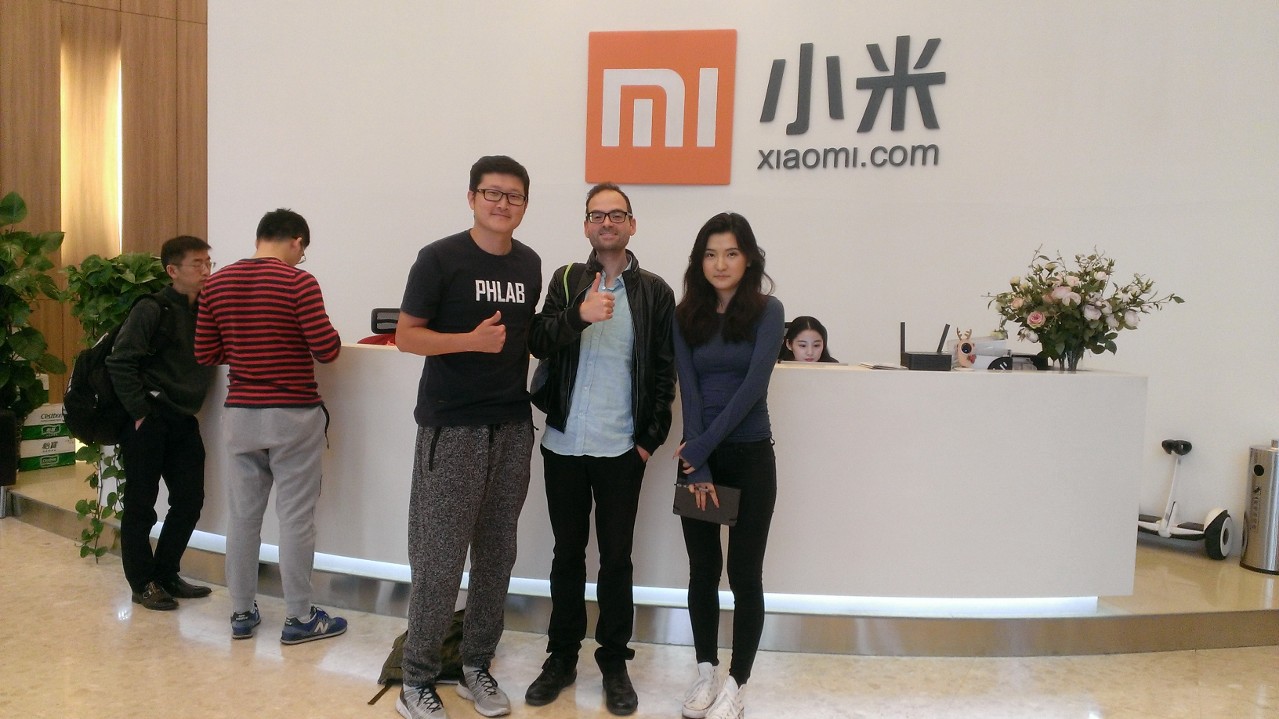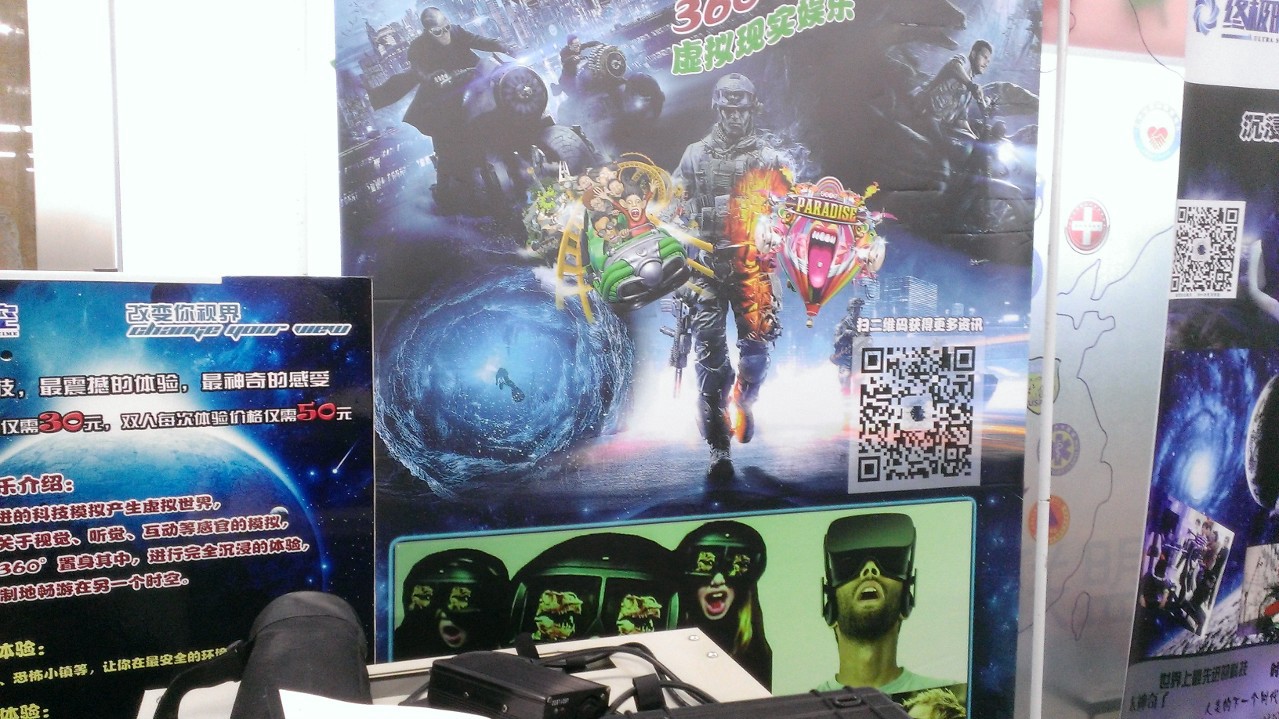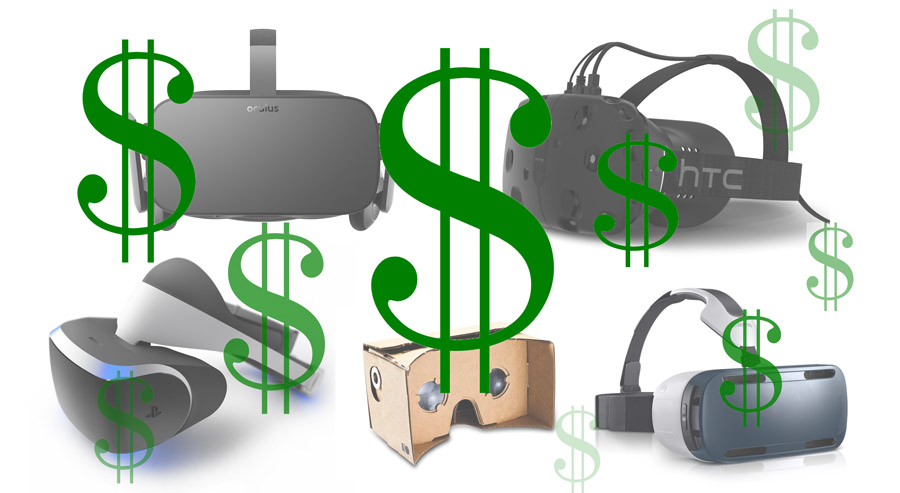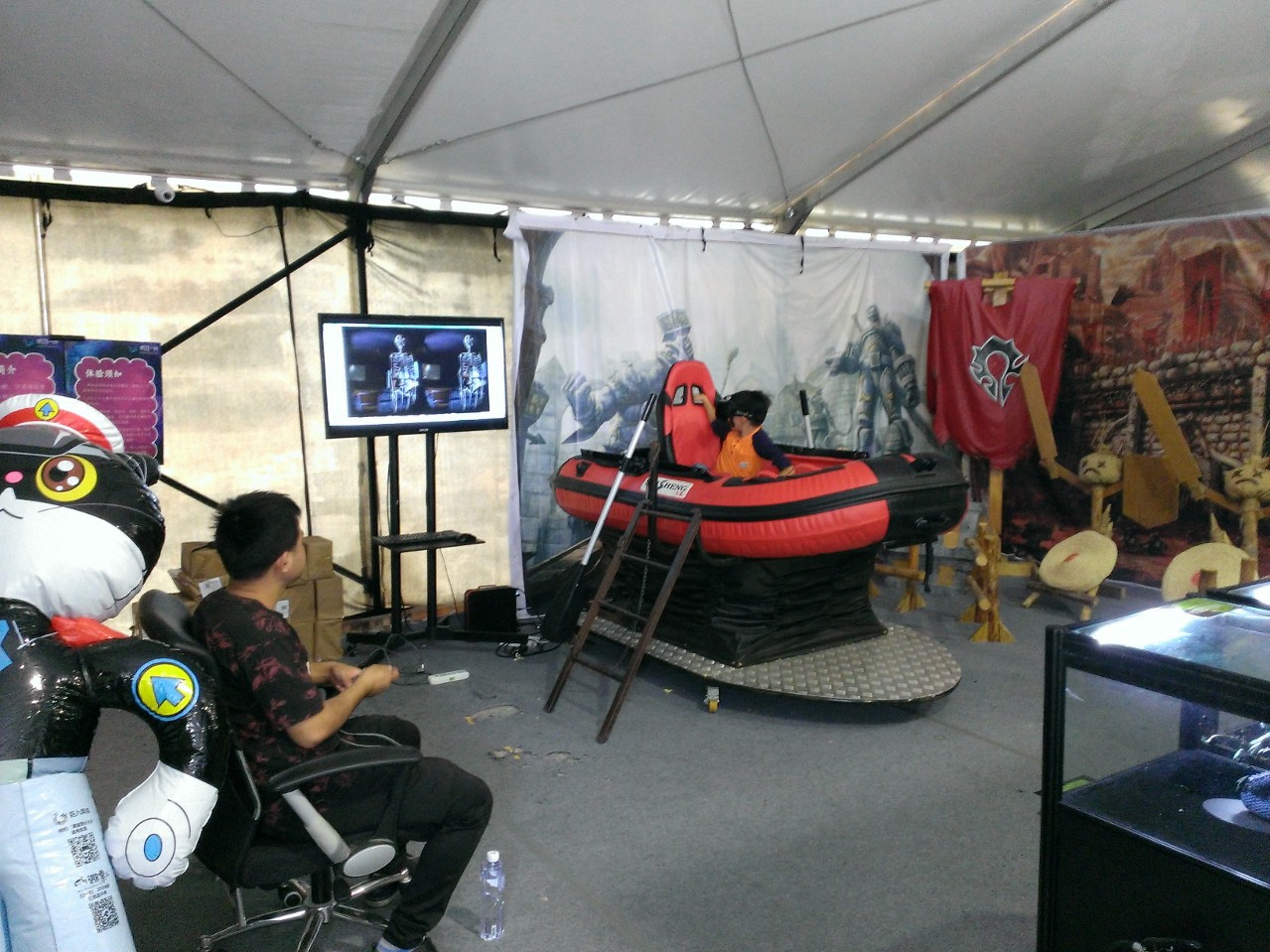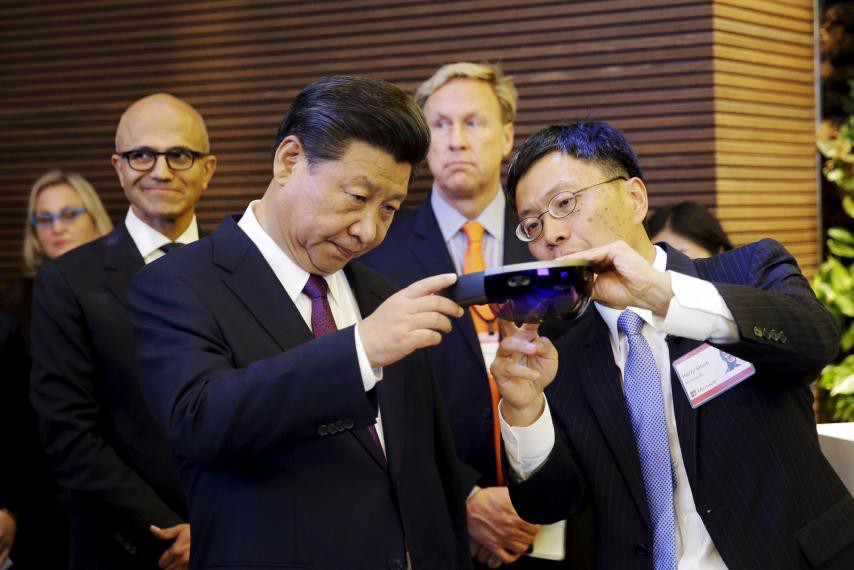During the Fall, I was invited by Tsinghua, “China’s MIT”, to design a new blend of curriculum for their students. In a country where education is characterized by a predominance of test-taking and rote memorization, my goals were to unleash their creativity and critical thinking, while exploring the frontiers of learning through new pedagogy and the revolutionary potential of technologies such as virtual and augmented reality. This was the opportunity for me to meet several actors of the sector like the former-startup-now-giant Xiaomi, in a very busy period for the brand. Let’s see how Xiaomi’s latest headset is illustrating the growing leading role of China in the VR industry, and its particularities compared to the Western market.
Prelude: Xiaomi Mi VR Reveal
A few months ago, Xiaomi held a major event at the Peking University in Beijing, to officially reveal the Mi Note 2. But it was not the impressive phablet that caught our interest. It was a virtual reality headset, the Mi VR. This device is particularly promising for the democratization of VR hardware as it’s going far beyond the brand’s first inroad at the market, the Xiaomi VR, a simili-Cardboard remarked for its quality and its great affordability.
Much like the Samsung Gear VR with the Samsung Galaxy line, Mi VR requires a smartphone and is expectedly compatible with Mi Note 2, the Mi 5, Mi 5s, and Mi 5s Plus. More exciting is the price tag of 119 Yuan, around $17,56, continuing the aggressive pricing after the introduction of Xiaomi VR at 49 Yuan (less than $8 locally, although it costs up to $19 to acquire it outside of China).
Interviewed just a week before this announcement, Senior Operation Manager Chris and Content Manager Keri confirmed the strategy of popularizing virtual reality in China through widespread dissemination of devices and a user and developer-friendly environment. This augurs a platform war as becoming the dominant distribution channel of a potential mega-billion Yuan industry is tempting (VR market could represent 55 billion Yuan in 2020) and many other Chinese firms like Tencent, Baidu, Alibaba, IQiyi are introducing competing systems.
Mi VR is shipped with a 9-axis inertial motion controller, much like Google’s Daydream View, demonstrating that Chinese’s companies can offer similar features to their Western counterparts at an accelerated rhythm. Moreover, the presence of such control scheme in what is a cheap mid-range device is promising for the future of virtual reality in general, heralding more complex interactions than what we’ve got so far with products characterized by limited user interactions (activating something by looking at it for seconds, or only one button) and the ensuing relatively simple experiences they allowed.
There is more to Virtual Reality than hardware. Like game consoles and smartphones, content is king. So far, Mi VR has attracted more than 200 VR studios to offer 500 panoramic videos and 30 apps.
After a beta period during November, the first limited batch of headsets were launched mid-December and sold out the first day. So did the second batch. Keri confirmed that this was a way for them to test the market, and so far the response has been very satisfying. They plan to scale up production so the device will always be available in stores.
Reason One: The Multiplication of Actors in the Sector
There are hundreds of Chinese hardware and software companies. When I’ve visited incubators like MadNet, as much as 10% of their startup batch was about VR. Two out of the four HTC Vive X accelerators in the world are located in China, in Beijing and Shenzhen.
This is partially explained by the absence of Western actors like Google and Oculus, which has triggered an upsurge of players wanting to fill the void, seen in the countless of Cardboard and other headset variants, facilitated by the manufacturing power of China, especially Shenzhen. As an illustration, just one brand, Baofeng, has sold more than one million of their half-dozen type of headsets in just 3 months, and there are numerous stakeholders like that.
Reason Two: Investment Fever
As an article from TechNode states, “Total VR investment in 2015 and 2016 reached 4 billion RMB ($593 million USD). Investment in 2016 Q1 reached its peak, up 20% from the previous quarter.” Lately, 1,5b RMB have been invested for VR in Shenzhen alone.
There are fears of a VR bubble given the usual ingredients of such phenomenon like a peak of inflated expectations as per Gartner’s Hype Cycle. It derives into a discrepancy between the fundamental value that VR is bringing to the world now and in the coming years and its valuation materialized in the borderline-crazy sum invested in projects by funds that oftentimes don’t carefully consider their intrinsic quality. It’s a given that a good part of VR startups will simply die out once the peak will be passed.
What is encouraging is that many people are aware of it, and are contributing to the maturation and structuring of the sector with dedicated funds and alliances like the Virtual Reality Venture Capital Alliance (VRVCA), combining capital and a growing expertise in the subject. Their competitive advantage compared to the West is the pace at which they are created, their number, and their capital which is really substantial.
Reason Three: VR Kiosks and Hardware
I’ve observed countless mothers and grandmas using the impressive virtual reality installations in shopping centers, just to have fun, showcasing how the popularization of VR is one or two steps ahead of Europe for instance where it mostly remains the private meadow of my beloved geeks.
The tech is truly democratized through a burgeoning of VR arcades, more than 3000, mostly in malls. Thousands of consumers are going in such place casually after their shopping, paying 20 to 70 Yuan for rather long play sessions, in stunning booths, that stand out by an extensive use of hardware like special seats and reproductions of vehicles. This factor alone may explain why this second wave of VR, following the failed one from the 90s, may well gain true momentum this time (read this piece from Polygon about it here).
Reason Four: Media
This structuring of the VR/AR industry is obviously accompanied by the multiplication of media, such as 87870, 83830, Yivian, and 7tin. Much of those actors are mindful of the decade-long difficulty of focusing only on news online delivery, and have quickly sought to grow beyond their starting nature. 87870, for instance, promotes itself as the biggest Chinese VR platform, providing information, reviews, editorials, but also a portal to access the content itself.
CEO Andrew D Kim, told me how 87870 is set out to bridge Western to China and VR technologies to traditional industries. They have defined this effort as “VR+” and support it through the Industry Ecosystem Alliance (IEA) built with Chinese corresponding government entities and key industry leaders. VR+ IEA will be officially announced in March 16th.
Reason Five: Backing from the State and Institutions
China has launched an “Internet Plus” initiative, set to transform traditional businesses and industries and to fuel their expansion through digitalization and new technologies, and there are high hopes from officials that VR and AR can play a major role in this. This explains why in most of the VR related activities and physical setups where i have been, I’ve noticed golden plaques indicating the support from Chinese government. There were also pictures of the Chinese president Xi Jinping and quotes of his speeches where VR is considered as a centerpiece of China’s growth. From his B20 Summit intervention:
First, we need to build an innovative world economy to generate new drivers of growth. Innovation holds the key to fundamentally unleashing the growth potential. The new round of scientific and industrial revolution with Internet at its core is gathering momentum, and new technologies such as artificial intelligence and virtual reality are developing by leaps and bounds. The combination of the virtual economy and the real economy will bring revolutionary changes to our way of work and way of life.
The fact that the top officials have acknowledged the existence of this technology so often is leap beyond what I’ve observed in many Western countries were the terminology around VR is seldom heard. And it’s evidently not limited to recognition as VR is officially a part of China government’s 13th “5 years plan”, meaning it receives official backing. Xinhua, China’s official news agency, opened a VR/AR channel in May 2016. The Ministry of Industry, Information and Technology plans on formulating standards for VR/AR and on opening a R&D lab on VR. For that matter, those laboratories are proliferating, the fruits of collaborations between companies like HTC, and official bodies such as the Municipality of Shenzhen.
Reason Six: Ridiculous Projects
Often times, when a technological trend is gaining steam, one of the most visible manifestations is the advent of bold, heading towards eccentric projects. This is the case of VR in China, with for example, Donghu VR Town, a whole city built in the south of the country, designed with virtual reality intertwined in every aspects from services, healthcare, education, to entertainment.
Some of these undertakings barely hide their “buzz-making” nature, surfing on the trendiness of the VR terminology for sometimes very shallow or irrelevant projects in terms of virtual experience. Still we can bet that a few of those initiatives will act as moonshots, further stimulating the industry.
Implications for the VR Industry
This frenzy will have some good repercussions for the industry such as a wide propagation of devices capable of running VR. Then, once the hardware dissemination phase will slow down, the further focus on content will hopefully have a positive influence on its overall quality thanks to more experienced developers and other factors (read an article about this trend here).
Nonetheless many observers are circumspect in front of the craze, especially for the investment. An anonymous developer said to me “they are giving millions to startups doing lame panoramic videos or very basic survival horror games. Content quality is average to subpar for now. Many of these actors are simply not thinking of the specifics of VR development, what this new medium allows in terms of experience. Both the founders, and the investors, want fast cash-in”. This pattern translates into real negative impact for the industry as the majority of the VR startups created for the past years are declaring bankruptcy.
What is reassuring is that numerous players are acknowledging this situation and trying to do something about it. Xiaomi’s Chris and Keri openly recognize that there is much to do and that they are hard at work to build a qualitative ecosystem, raising up the overall quality of VR output to go beyond sensational short 360° movies. Their position is pretty similar to their CEO Lei Jun, who perceives VR as a formidable ground for exploration, but which may take up to 5 years to really mature. For the VR startups, the attrition rate was expectable, and while many of them will succeed and satisfy us with their product, the failed ones will learn from their letdown which will benefit their following undertakings.
The Innovation of China’s VR Crown
All in all, this combination of manufacturing power, low cost, capital availability, and “readiness” of Chinese urbanites — which goes beyond what I saw so far in Europe where most of VR remains the private turf of my peers, the nerds — could very well crown China as the main drive of the global VR market.
Even more interesting is that we see a pattern of Chinese companies not satisfied with doing copycat work anymore. Tencent’s WeChat goes beyond its Western counterpart such as Messenger; the Mi Mix will feature a borderless screen potentially 8 months ahead of the next iPhone or Samsung Galaxy.
It’s the same with VR. For hardware: Dloldo is crafting since 2013 cutting-edge glasses that bring hope for better user experience through a more comfortable and lightweight device that what we are using so far. We can also reveal that Xiaomi wants to cover most of the VR segments so an independent headset with its own display and hardware is to be expected, with the usual slashed cost.
For content:
Cinema and animation: China is at the forefront of this field with numerous native and foreign studios like Magic Dumplings, Secret Locations and Sandman Studios, experimenting and developing cinematic experiences for what is the fastest growing movie market in the world (read a MIT Technology Review’s article about this here).
Games: as an example, the billion-dollar Chinese gaming company Hero which announced a joint venture with US based Virtuix Omni to adapt their famous games to the latter’s motion platforms.
Tools: TPCast, a Chinese startup incubated in Vive X, has developed a long-awaited solution for untethered virtual reality.
Services: Alibaba’s Buy+ virtual store and its VR-enabled mobile payment solution.
All this bodes well for VR as the Chinese ecosystem, enriched by a new generation of entrepreneurs and employees who increasingly want to develop and unleash their creativity, will certainly surprise us by going beyond what Western and Taiwanese studios are proposing us in terms of hardware and software.
Feel free to reach out or use the comments section to discuss this Chinese role, its various factors and implications, and name some innovative Chinese VR/AR companies.
— —
 This article was contributed by Yoni Dayan, a Futurist, Entreprenuer, and Co-Instructor at Stanford, specialized in education technology, virtual and augmented reality, and future tech. The author would like to afford special thanks to James McGirk, Andrew D Kim, Mitch Altman, and Julien Buty, for their help in writing this article. You can read the original version of this article on the author’s Medium blog. Follow him on Twitter.
This article was contributed by Yoni Dayan, a Futurist, Entreprenuer, and Co-Instructor at Stanford, specialized in education technology, virtual and augmented reality, and future tech. The author would like to afford special thanks to James McGirk, Andrew D Kim, Mitch Altman, and Julien Buty, for their help in writing this article. You can read the original version of this article on the author’s Medium blog. Follow him on Twitter.

